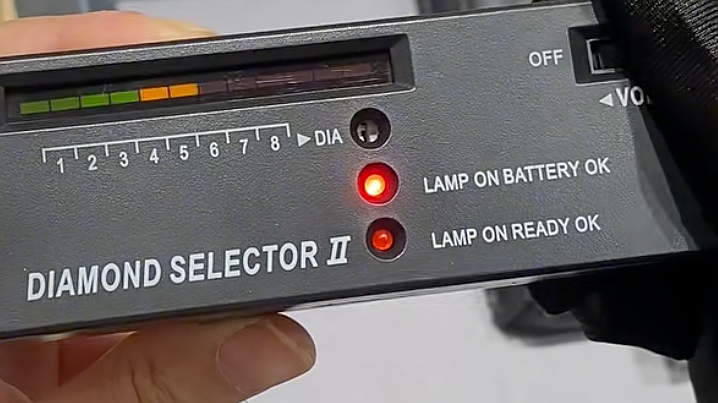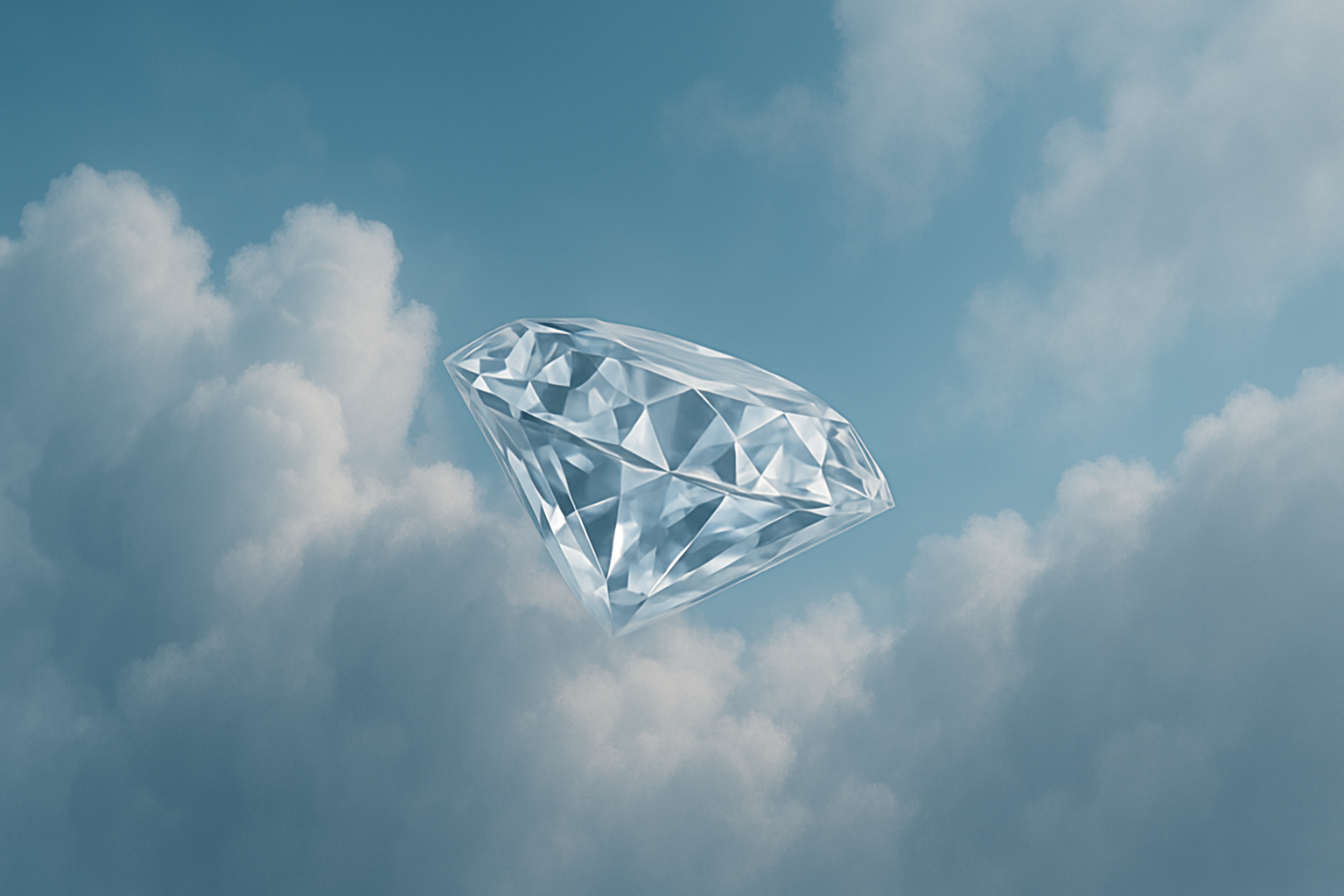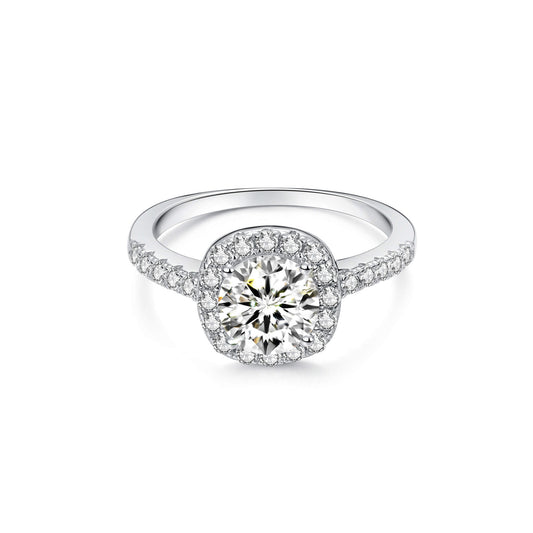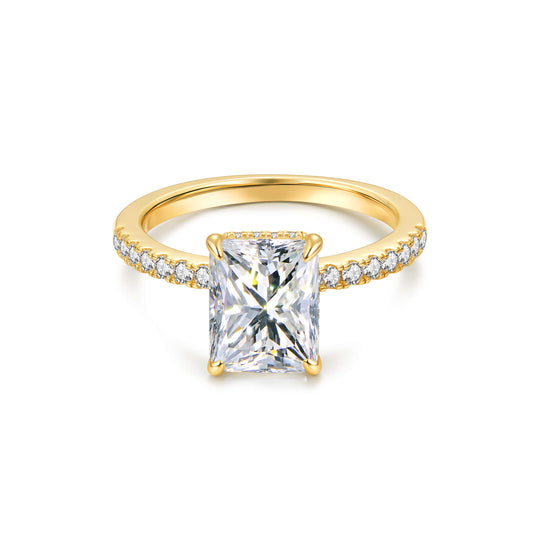Understanding Lab-Grown Diamond Color and Clarity: The Ultimate Guide
Lab-grown diamonds are revolutionizing the jewelry industry, offering an eco-friendly and affordable alternative to natural diamonds. Lab-grown diamond color and clarity charts help buyers understand quality and grading. In this guide, we’ll break down everything you need to know, including grading scales, how color and clarity impact value, and how to use a lab-grown diamond color chart to choose the perfect diamond.

What Are Lab-Grown Diamonds?
Lab-grown diamonds, also known as man-made or synthetic diamonds, are chemically identical to natural diamonds. The key difference lies in their origin: while natural diamonds form over millions of years beneath the Earth’s surface, lab-grown diamonds are created in controlled laboratory environments using advanced technology.
These diamonds are available in a wide range of colors and clarity levels, making them a versatile choice for engagement rings, necklaces, and fine jewelry.
The 4Cs of Lab-Grown Diamonds: Color, Clarity, Cut, and Carat

When shopping for a lab-grown diamond, it’s essential to understand the 4Cs—color, clarity, cut, and carat weight.
Color: Understanding the Lab-Grown Diamond Color Chart
Lab-grown diamonds are graded on a color scale from D (colorless) to Z (light yellow or brown).
Clarity: How Inclusions Affect Appearance
Clarity refers to the presence of inclusions or imperfections within the diamond, affecting transparency and brilliance.
Cut: The Most Important Factor for Sparkle
The cut affects how well the diamond reflects light, influencing its brilliance.
Carat: Measuring Diamond Size
Carat weight determines the size of a diamond and plays a role in pricing.
How Lab-Grown Diamonds Are Created: HPHT vs. CVD
Lab-grown diamonds are produced using two primary methods:
HPHT (High Pressure High Temperature)
-
Mimics natural diamond formation by exposing carbon to extreme heat and pressure.
-
Produces high-quality diamonds with some potential metallic inclusions.
CVD (Chemical Vapor Deposition)
-
Involves layering carbon atoms in a vacuum chamber to form a diamond.
-
Often results in fewer impurities and a more uniform appearance.
Both methods create stunning diamonds, but CVD diamonds tend to have better clarity and color consistency.
Lab-Grown vs. Natural Diamonds: What’s the Difference?
Lab-grown diamonds are chemically, physically, and optically identical to natural diamonds. The main difference? Their origin.
Key Advantages of Lab-Grown Diamonds
✔ Affordable Pricing – Typically 20-40% less expensive than natural diamonds.
✔ Ethical & Sustainable – No mining required, reducing environmental impact.
✔ High Quality – Can be more flawless and colorless than some natural diamonds.
For buyers who prioritize sustainability, lab-grown diamonds offer an ethical alternative without sacrificing quality.
How Color and Clarity Impact the Value of Lab-Grown Diamonds
Lab-Grown Diamond Color Grading Scale
The lab-grown diamond color chart follows the same scale as natural diamonds, ranging from D (colorless) to Z (light yellow/brown).

| Grade | Description | Best For |
| D-F | Completely colorless, highest quality | Luxury buyers |
| G-J | Near-colorless, appears white to the naked eye | Best value |
| K-M | Slight yellow/brown tint, noticeable under certain lighting | Budget-conscious shoppers |
| N-Z | Clearly yellow or brown tones | Rare, vintage-inspired looks |
Here’s an overview of the color grades:
• D-F: Colorless diamonds that reflect the most light and have the highest quality.
• G-J: Near-colorless diamonds that still appear colorless to the naked eye.
• K-M: Diamonds with slight yellow or brown tint, more noticeable to the eye.
• N-Z: Diamonds with noticeable color, often appearing yellow or brown.
For those looking to balance cost and quality, diamonds in the G-J range offer an excellent choice, as they are often indistinguishable from colorless diamonds without magnification.
Lab-Grown Diamond Clarity Grading Scale
Clarity measures the amount of inclusions or blemishes in a diamond.
| Clarity Grade | Description | Visibility of Inclusions |
| Flawless (FL) | No internal or external flaws | Invisible under magnification |
| Internally Flawless (IF) | No internal flaws, minor external blemishes | Nearly perfect |
| VVS1, VVS2 | Very, very slight inclusions | Hard to detect under magnification |
| VS1, VS2 | Very slight inclusions | Only visible under 10x magnification |
| SI1, SI2 | Slightly included | May be visible to the naked eye |
| I1, I2, I3 | Included | Visible inclusions, affects brilliance |
Lab-grown diamonds are graded on the following scale:
• Flawless (FL): No internal or external imperfections.
• Internally Flawless (IF): No internal imperfections, but minor external blemishes may be present.
• Very Small Inclusions (VVS1, VVS2): Inclusions are difficult to detect even under magnification.
• Small Inclusions (VS1, VS2): Inclusions are visible under magnification but not to the naked eye.
• Slightly Included (SI1, SI2): Inclusions may be visible to the naked eye but don’t significantly affect the diamond’s beauty.
• Included (I1, I2, I3): Inclusions are visible to the naked eye and may affect the diamond’s brilliance.

For most buyers, diamonds with a clarity grade of VS1 or VS2 provide excellent value, offering a balance between clarity and cost.
Reading a Lab-Grown Diamond Color and Clarity Chart
When buying a diamond, understanding the lab-grown diamond color and clarity chart helps you choose the best stone for your needs.
| Factor | Best Grades for Value | Best Grades for High-End Quality |
| Color | G-J (near-colorless) | D-F (colorless) |
| Clarity | VS1-VS2 (eye-clean) | FL-IF (flawless) |
Balancing color and clarity within your budget ensures you get the best possible diamond.
| Color Grade | Description |
| D-F | Colorless, high-quality diamonds with exceptional brilliance. |
| G-J | Near-colorless, offers excellent value. |
| K-M | Light yellow or brown tint, noticeable but often still appealing. |
| N-Z | Yellow or brown tint, may affect appearance significantly. |
| Clarity Grade | Description |
| FL, IF | No visible imperfections, highest quality. |
| VVS1, VVS2 | Minor inclusions, difficult to detect even under magnification. |
| VS1, VS2 | Small inclusions, not visible to the naked eye. |
| SI1, SI2 | Inclusions visible to the naked eye, but minimal impact on beauty. |
| I1, I2, I3 | Inclusions significantly visible, affecting the diamond’s brilliance. |
Choosing the Perfect Lab-Grown Diamond for Your Engagement Ring
-
Consider the 4Cs
Decide which factor matters most—if you want maximum sparkle, prioritize cut over color and clarity.
-
Opt for Near-Colorless Diamonds
Diamonds in the G-J range look white but are significantly more affordable.
-
Select a Clarity Grade That Balances Quality & Cost
VS1 or VS2 diamonds offer eye-clean clarity without the premium price tag of flawless diamonds.
Certification & Ethical Considerations
When purchasing a lab-grown diamond, always ensure it comes with certification from trusted grading institutions, such as: ✔ IGI (International Gemological Institute)
A certified diamond guarantees accurate grading of its color, clarity, and cut.
The Future of Lab-Grown Diamonds: Sustainability & Innovation
Advancements in diamond-growing technology are making lab-grown diamonds more affordable and widely available. With improved sustainability, these diamonds offer a responsible and stunning choice for modern buyers.
Frequently Asked Questions (FAQ)
Q1: What is the difference between lab-grown diamonds and natural diamonds?
A1: Lab-grown diamonds are chemically identical to natural diamonds but are created in a laboratory using advanced technology, making them more affordable and environmentally sustainable.
Q2: How are lab-grown diamonds graded for color and clarity?
A2: Lab-grown diamonds are graded using the same scales as natural diamonds, with color grades from D (colorless) to Z (yellow or brown), and clarity grades from FL (flawless) to I3 (included).
Q3: Are lab-grown diamonds cheaper than natural diamonds?
A3: Yes, lab-grown diamonds are typically 20-40% less expensive than natural diamonds of the same quality.
Q4: Can I get a lab-grown diamond for my engagement ring?
A4: Absolutely! Lab-grown diamonds make an excellent choice for engagement rings due to their affordability, beauty, and ethical sourcing.
Q5: How sustainable are lab-grown diamonds?
A5: Lab-grown diamonds are more sustainable than mined diamonds, as they are created using less energy and cause minimal environmental impact.
Explore Neoshine’s Lab-Grown Diamonds Collection
Interested in finding the perfect lab-grown diamond? Check out Neoshine’s collection of high-quality, sustainable lab-grown diamonds to find the ideal piece for your engagement ring or special occasion.












